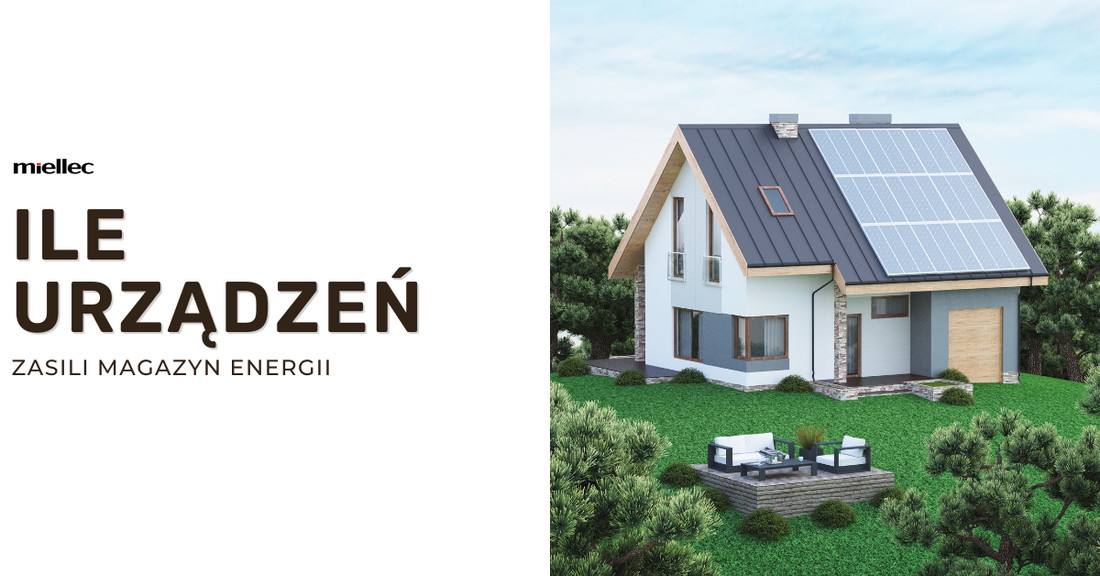In today's world, where striving for stable energy supplies, sustainable use of renewable sources and energy efficiency have become a priority, energy storage plays an extremely important role. According to PIME data, there are currently around 11,000 home storage facilities in Poland with a total capacity of over 100 MW and a capacity of over 130 MWh. Everything indicates that Poles will be increasingly willing to invest in energy banks. It is therefore worth asking yourself how long a fully charged storage facility will actually last. How many devices in your home will the energy storage facility power? We suggest how to calculate the efficiency of the bank.
Energy storage matters today
There is a lot of talk today about the great importance of storing energy produced by home photovoltaic installations. But why is it so important? First of all, it allows for the efficient and maximum use of renewable energy. Storage allows for the storage of excess energy during periods of high production (e.g. on sunny days or windy nights) and its use when demand is greater or when conditions are not conducive to production.
Energy storage is also a way to increase energy independence, reduce the risk of interruptions in the supply of power from the grid in the event of failures or natural disasters, and optimize energy networks by balancing energy demand and supply (this can reduce the load on the network during peak hours, contributing to greater stability of the energy system and reducing the costs associated with its maintenance).
In short, energy storage is the first step towards creating a sustainable and stable energy system and achieving goals related to reducing greenhouse gas emissions and combating climate change.
How to use energy from storage?
How many devices in a home can use energy from the storage depends on several factors – including the number of electrical devices in the home, their energy consumption, and the capacity and efficiency of the storage itself. It is worth considering what devices can be connected to the storage first.
The energy from the storage can primarily be used to power lighting systems – light bulbs, lamps, LED lighting, etc. In addition, the storage can be used by:
- small and large household appliances – fridge, freezer, washing machine or dryer,
- air conditioning and heating devices – air conditioners, furnaces, heat pumps,
- consumer electronics – televisions, computers, chargers.

What kind of energy storage does your household need?
There are various storage capacities available on the market. How to choose the right one? First of all, you need to estimate how much energy your household uses on a daily basis. A thorough analysis of your electricity bills will provide you with this information. It is important to take into account the energy consumption of all electrical appliances, lighting, HVAC systems (heating, ventilation, air conditioning) and other electrical devices in the home.
Consider whether there are special needs that may require a larger power reserve—do you have appliances on your property that use a lot of electricity, or if you plan to power important devices in the event of a power outage, such as a refrigerator or security systems? Also consider your budget.
The storage should have a capacity equivalent to the power of the photovoltaic installation, i.e. in the case of 5 kW photovoltaics, a 5 kWh bank will be optimal. If the greatest energy consumption occurs during the hours of its lowest production, it is worth considering buying a larger storage.
Choosing a warehouse with the right capacity is key to fully utilizing the storage potential. A proper warehouse guarantees greater efficiency in using the photovoltaic installation and does not expose the prosumer to additional costs. Buying a warehouse that is too large means not only higher costs, but also a longer payback period. Buying a warehouse that is too small, on the other hand, means lower efficiency and the inability to use the full potential of the photovoltaic installation. Before choosing a warehouse, it is worth asking specialists for a comprehensive energy audit, which will specify in detail the energy needs of the household.
How to estimate how many devices will be powered by the energy storage?
To estimate how many devices in your home you can power with your energy storage, you need to consider a few things:
- warehouse capacity,
- energy consumption by individual devices,
- prioritization of devices (i.e. which devices are crucial for your daily functioning and which ones you would like to power using energy storage, e.g. in the event of a grid failure).
Once you have this information, you can calculate how many devices in your home will be powered by the energy storage. How do you do this? Convert the energy consumption of each device to kilowatt-hours per day or month. Add up the energy consumption of all the devices you would like to power with the energy storage. Compare this value to the capacity of the energy storage. If the total energy consumption is less than or equal to the capacity of the storage, it means that these devices can be powered by the energy storage.
Remember that the accuracy of the estimate depends on the accuracy of the energy consumption data and the storage capacity, so it is important to get the most precise information possible. Consider that the technical characteristics of the energy storage, its efficiency and the possibility of connecting different devices can also affect how many devices the storage will ultimately power.





